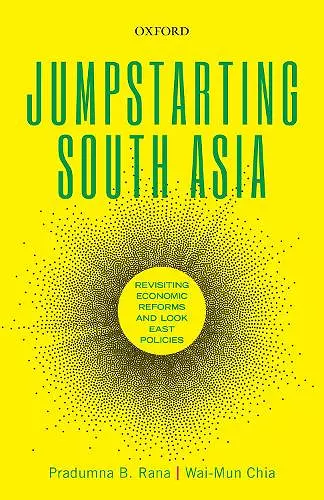Jumpstarting South Asia
Revisiting Economic Reforms and Look East Policies
Pradumna B Rana author Wai-Mun Chia author
Format:Hardback
Publisher:OUP India
Published:21st Dec '17
Currently unavailable, and unfortunately no date known when it will be back

Economic reforms implemented by the South Asian countries in the 1980s and 1990s had positive impacts on growth, and the region's share of world GDP had started to increase. But, more recently, economic growth in South Asia has softened somewhat due to a number of reasons. This book focuses on the slowing pace of economic reforms and makes the case for a two-pronged strategy to jumpstart South Asian economies. First, South Asian countries should complete the economic reform process that they had begun and implement the more microeconomic reforms, namely, the sectoral, and governance and institutional reforms to enhance competition and improve the operation of markets. Second, they should implement the second round of 'Look East' policies or LEP2 to (i) link themselves to production networks in East Asia, their fastest growing markets, and (ii) develop production networks in manufacturing and services within their region. The book argues that the proposed strategy will lead to a win-win situation for all countries in South Asia and East Asia, and reinvigorate economic integration within South Asia, one of the least integrated regions of the world. The book also identifies the unfinished policy reform agenda for each South Asian country and the components of the LEP2 that they should implement.
'This is an insightful book on a very important aspect of public life in contemporary India. Its value is enhanced by the fact that the country is undergoing major political changes.' Andre Beteille, Professor Emeritus of Sociology, University of Delhi, India 'The book overwhelmingly emphasizes the fact that public policy is not an entirely autonomous domain of activityl its is embedded in a variety of knowledge practices, social norms, political proceses, insitutional cultures...there is simply no other guide of its sort available.' Pratap Bhanu Mehta, Vice Chancellor, Ashoka University (Quote from the Foreword) 'Chakrabarti and Sanyal take a suitably pragmatic approach, identifying some useful theories (such as complexity theory) and insights (such as that the policy process does not resemble a cycle with clear stage) that seem to travel across time and space, and building new insights from case studies to explain the passage of nine ''landmark laws'' since 1999. The end result is an engaging book which highlights the potential for a new research agenda in India.' Paul Cairney, Professor of Politics and Public Policy, Division of History and Politics, University of Stirling, Scotland, UK 'Anywhere in the democratic world, the journey of a law is long and complex, with its origins frequently debated, and is evaluation almost marked with conflict and controversy. Every bill presented in Parliament invariably bears marks of those battles and compromises. Unfortunately, the grammar of policymaking in India--from felt need to legislation--is rarely studied. The present volume fills this important void. Using case studies to understand the unique journey of some laws is a welcome effort.' C. V Madhukar, investment partner, Omidyar Network, and co-founder, PRS Legislative Research
ISBN: 9780199479283
Dimensions: 224mm x 148mm x 24mm
Weight: 434g
251 pages